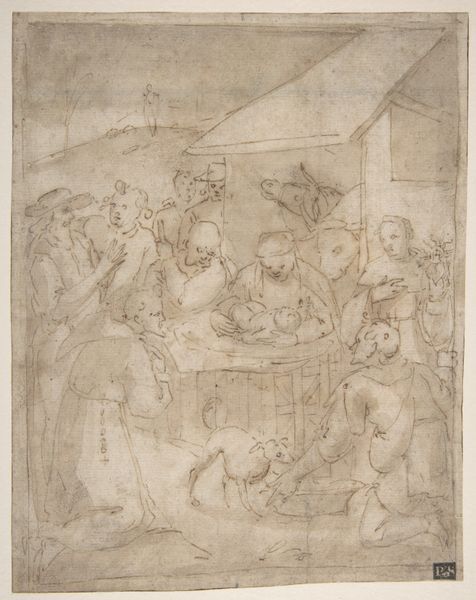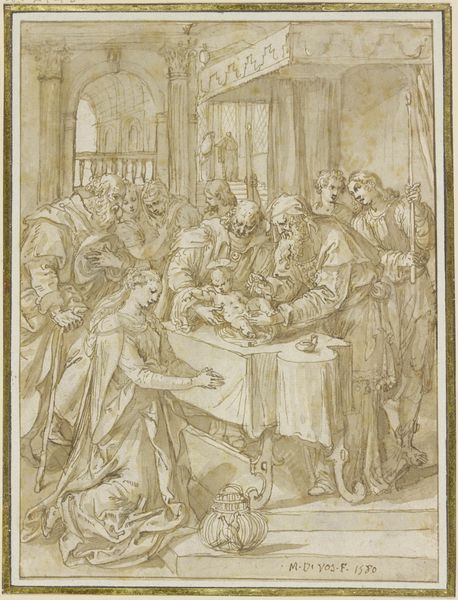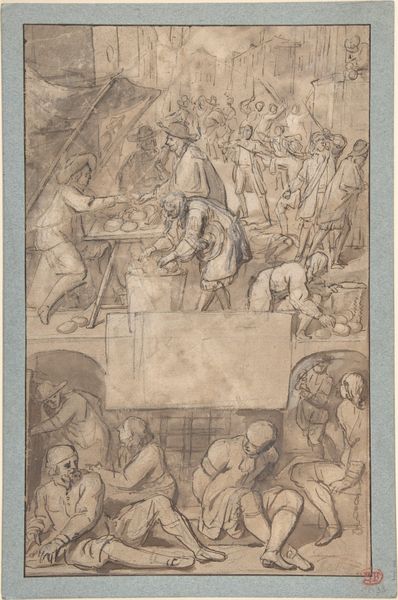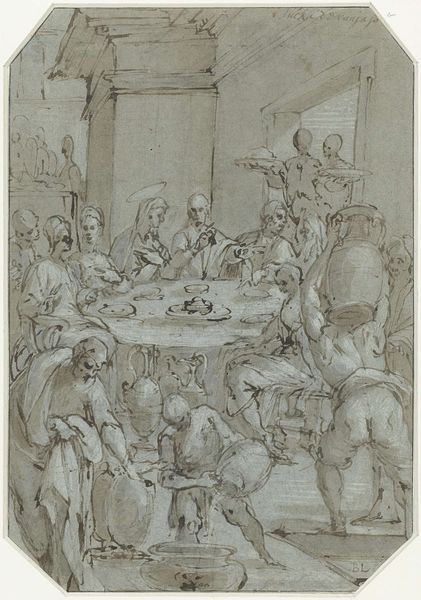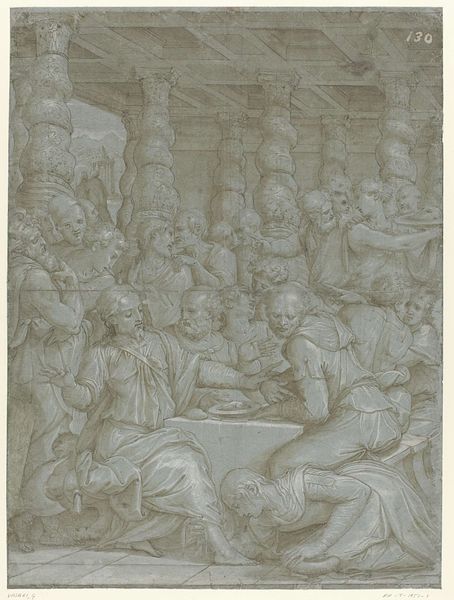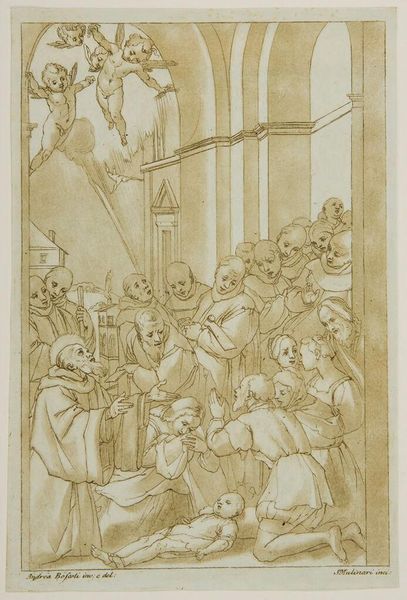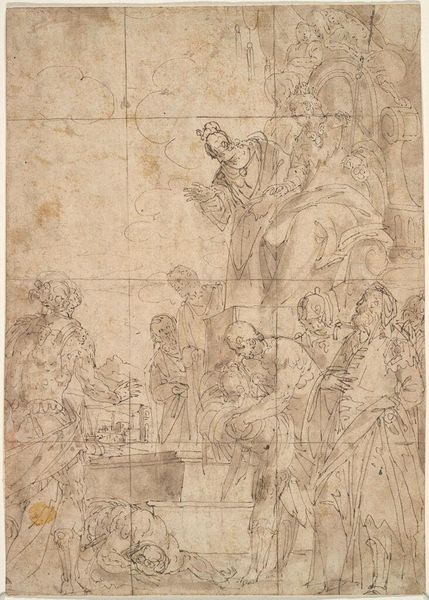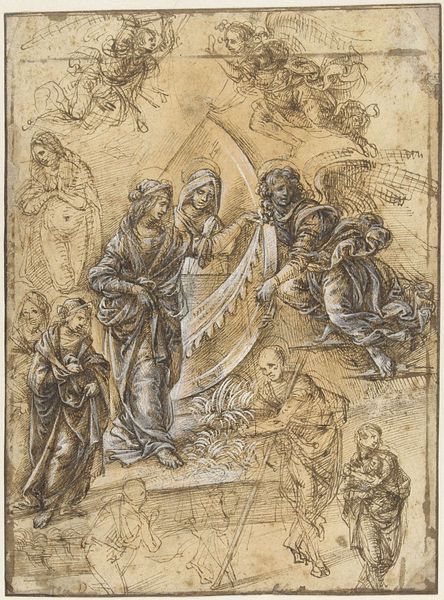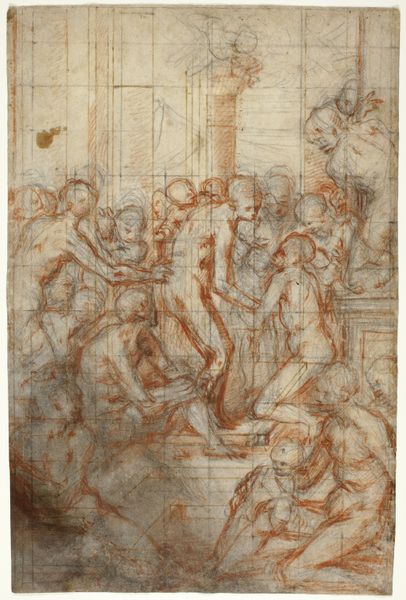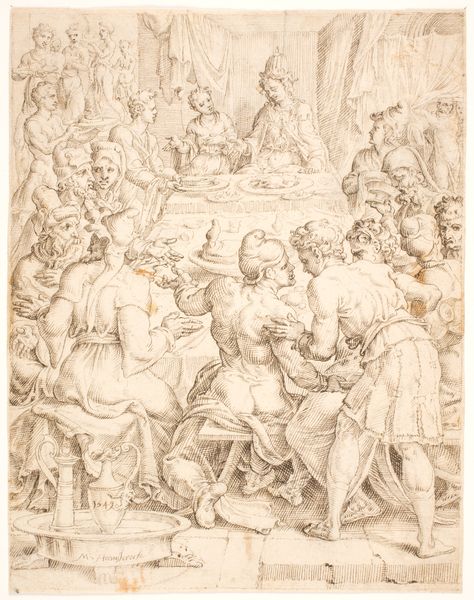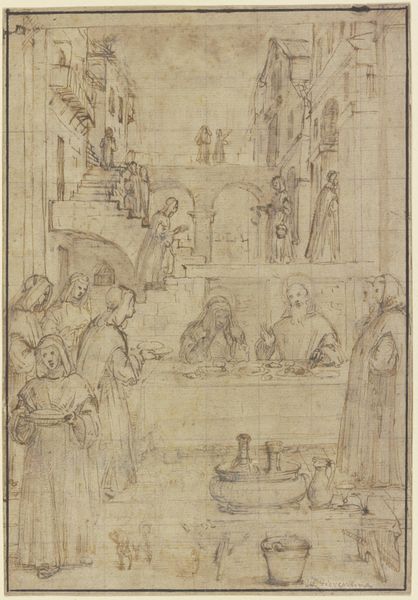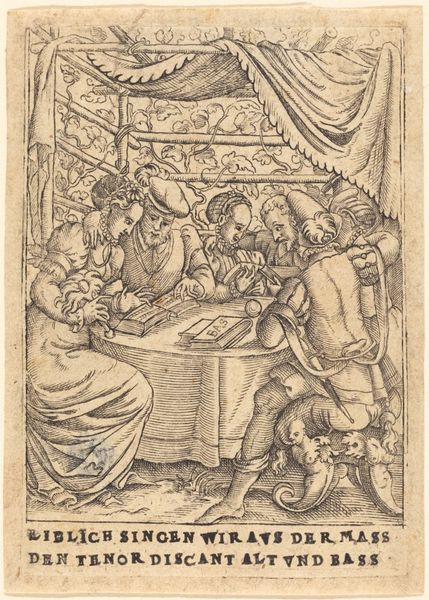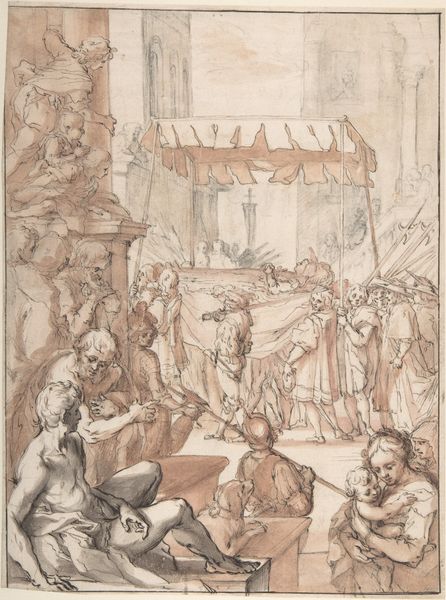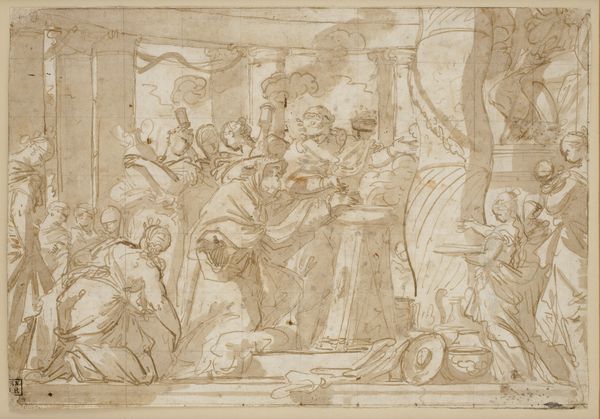
drawing, ink, pen
#
drawing
#
narrative-art
#
charcoal drawing
#
figuration
#
11_renaissance
#
ink
#
coloured pencil
#
pen
#
history-painting
#
italian-renaissance
Dimensions: height 243 mm, width 176 mm
Copyright: Rijks Museum: Open Domain
Curator: Let’s take a closer look at "The Circumcision" attributed to Giovanni Battista Cungi, dating from around 1500 to 1569. It’s rendered in pen, ink, and charcoal drawing on paper. Editor: Immediately, I’m struck by the subdued palette and the intense concentration on everyone's faces. It’s not gruesome, but somber, almost reverent. The medium reinforces this, quite literally drawing us into the scene with thin and thick pen strokes that gives some characters and forms volume while leaving others nearly flat. Curator: Yes, and Cungi utilizes the artistic conventions of the Italian Renaissance, focusing on narrative-driven history painting—it captures a pivotal moment in religious history, emphasizing institutional continuity and faith. Consider how this piece might reflect on the values promoted and upheld within a specific historical and societal context, one built with the authority of art! Editor: What's most compelling for me, though, is the emphasis on process evident in the layering of the ink and the artist's approach to applying color. Notice how the use of varied drawing materials, coloured pencil and penwork combined to achieve an extraordinary result with depth and shading of forms. What can this tell us about artistic labour and practice at the time? Curator: I agree the drawing quality demonstrates Cungi’s commitment to traditional rendering and technique, showcasing the value that training held at that time. How the consumption of art by wealthy patrons shaped those practices, is what fascinates me! It highlights that the value placed on the work itself influences its reception within specific settings like wealthy households and later museums. Editor: The artwork brings the sacred moment into an immersive artistic space—even despite its modest scale. A powerful display that evokes the tactile qualities, in service to storytelling through labor-intensive creation processes Curator: A brilliant example of the confluence of cultural heritage, artistic tradition and visual artistry; I'm thinking a closer look at who held this type of piece in their private collections could bring some of these themes to life for visitors!
Comments
No comments
Be the first to comment and join the conversation on the ultimate creative platform.
